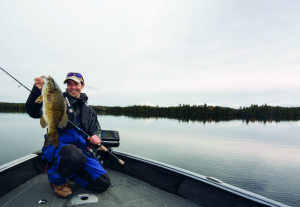What To Put In Your Backpacking Pack

If you’re planning a backpacking trip but you’ve never been on one, you might be unsure of what you should include in your bag. Consider how long you’re going to be on your trip as you want to take enough items instead of running out halfway through your adventure. When you’re packing, try not to make your bag too heavy because it can make it difficult to carry. You also need to make sure you’re using the right type of backpack, such as one that has enough support for your back and shoulders and one that has enough compartments for smaller items and important essentials that you need to quickly reach.
Pockets
When you look at a backpack, you’ll usually see quite a few pockets. Each pocket has a function. Some of them are for helping to distribute weight while others are for holding items that you don’t want to lose. The brain of your backpack is usually the largest compartment and is usually located at the top of the bag. This is where you want to store some of the important items that you’ll need right away when you’re backpacking, such as a map or a flashlight. This is also a compartment of your backpacking pack where you can keep water bottles and snacks. Blankets and clothes can be kept in your pack as well.
A front pocket is located on most backpacks. This could hold wet articles of clothing or a raincoat as well as light jackets. Since this is a smaller pocket and one located at the very front of backpacking packs, avoid putting anything heavy inside it because it can result in an uneven distribution of weight. There’s usually a pocket or a loop on the side of backpacks where you can put items that have handles, such as a knife for emergencies or a flashlight. A water bottle can also be put in a small pocket on the side of your pack, which is essential to carry with you so that you stay hydrated while walking.
Straps
You might wonder why there are numerous straps on your backpack. Each strap serves a function, mostly for providing support while you’re carrying the pack. If you carry heavy items, then try to get the straps as tight as possible so that they don’t have a lot of give in them. This can prevent the pack from falling off your back or shoulders, especially if you’re hiking up steep hills. Your pack might have a small strap on the bottom for securing a tent or a sleeping bag if you plan to camp out at night.
Overpacking
Although you want to make sure you have enough supplies for your adventure, you don’t want to overpack. If there is someone else walking with you, then divide the items that you plan to take into multiple bags so that each person can carry one. Plan what you’re going to pack the night before or even a few days before your trip. Pack everything to see how heavy your bag will be, making adjustments if necessary so that it’s not too heavy. Put the essential items in a separate stack so that you don’t forget to put them in your bag. If your pack isn’t too heavy for you to carry, you can then add items that you want to take, such as a book to read. Essentials include sunscreen, insect repellent, and a small first-aid kit.






